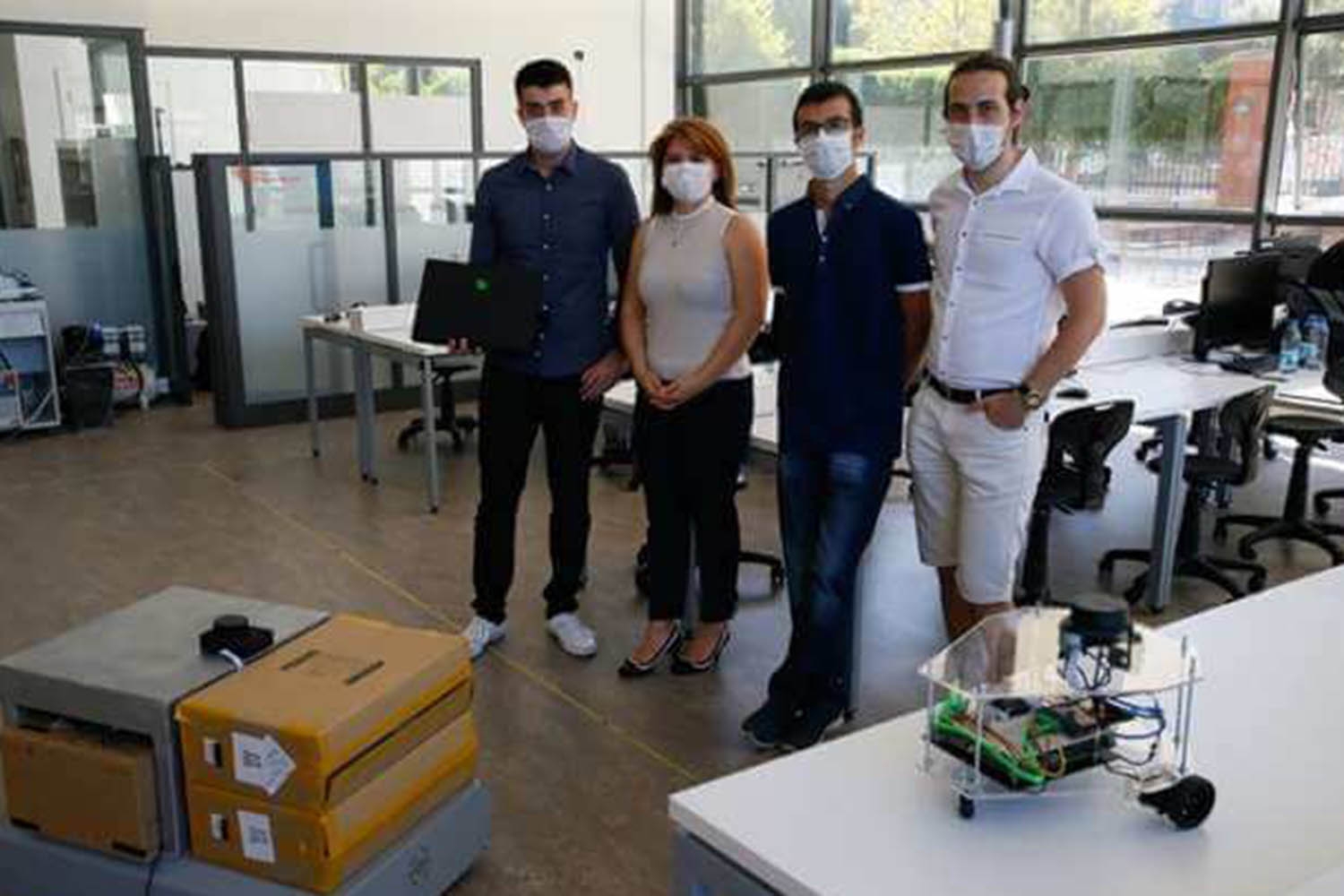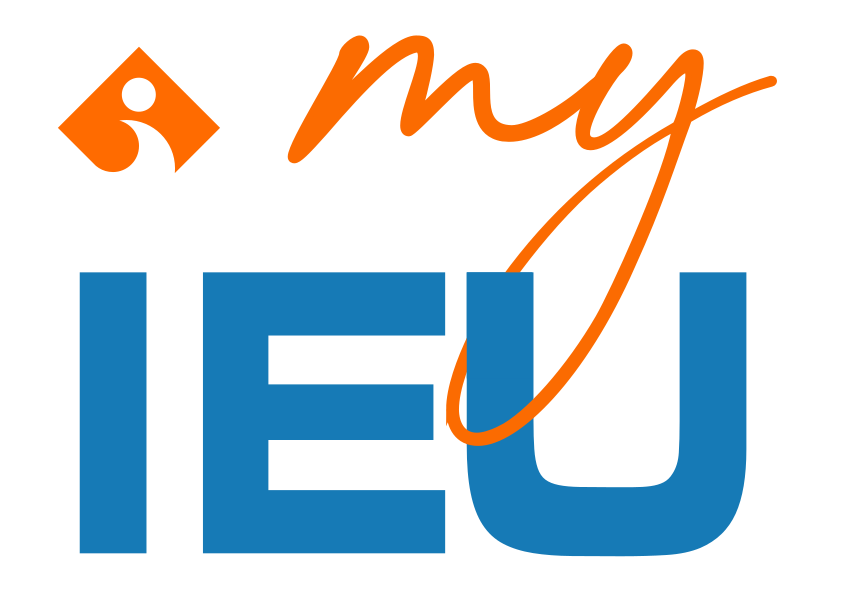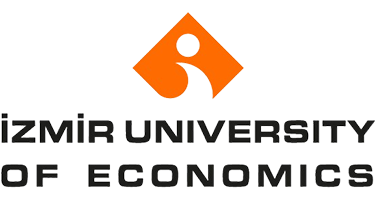|
Course Name
|
Intro. to Microelectromechanical Systems
|
|
Code
|
Semester
|
Theory
(hour/week)
|
Application/Lab
(hour/week)
|
Local Credits
|
ECTS
|
|
MCE 403
|
Fall/Spring
|
3
|
0
|
3
|
5
|
|
Prerequisites
|
None
|
|
Course Language
|
English
|
|
Course Type
|
Elective
|
|
Course Level
|
First Cycle
|
|
Mode of Delivery
|
- |
|
Teaching Methods and Techniques of the Course
|
- |
|
National Occupation Classification
|
-
|
|
Course Coordinator
|
|
|
Course Lecturer(s)
|
- |
|
Assistant(s)
|
- |
|
Course Objectives
|
The purpose of the course is to introduce the fundamental principles, design, fabrication techniques and applications of MicroElectroMechanical Systems (MEMS). |
|
Learning Outcomes
|
|
#
|
Content
|
PC Sub
|
* Contribution Level
|
|
1
|
2
|
3
|
4
|
5
|
| 1 | describe fundamental principles of different MEMS systems | | | | | | | | 2 | explain design and microfabrication techniques of MEMS systems | | | | | | | | 3 | compare different sensing methods | | | | | | | | 4 | compare different actuation methods | | | | | | | | 5 | analyze accelerometers, RF-switches, micro-engines, etc. | | | | | | |
|
|
Course Description
|
The main topics included in this course are the fundamental principles, design, fabrication techniques and applications of microelectromechanical systems (MEMS). |
|
Related Sustainable Development Goals
|
|
|
|
Core Courses |
|
| Major Area Courses |
X
|
| Supportive Courses |
|
| Media and Management Skills Courses |
|
| Transferable Skill Courses |
|
WEEKLY SUBJECTS AND RELATED PREPARATION STUDIES
|
Week |
Subjects |
Related Preparation |
Learning Outcome
|
| 1 |
Introduction and Motivation |
Liu, Foundations of MEMS (Chp 1-2) |
| 2 |
Electrostatic Sensing and Actuation Principles |
Liu, Foundations of MEMS (Chp 3-4) |
| 3 |
Electrostatic Sensing and Actuation Principles |
Liu, Foundations of MEMS (Chp 3-4) |
| 4 |
Thermal Sensing and Actuation Principles |
Liu, Foundations of MEMS (Chp 5) |
| 5 |
Thermal Sensing and Actuation Principles |
Liu, Foundations of MEMS (Chp 5) |
| 6 |
Piezoresistive Sensing Principles |
Liu, Foundations of MEMS (Chp 6) |
| 7 |
Midterm |
|
| 8 |
Piezoelectric Sensing and Actuation Principles |
Liu, Foundations of MEMS (Chp 7) |
| 9 |
Piezoelectric Sensing and Actuation Principles |
Liu, Foundations of MEMS (Chp 7) |
| 10 |
Magnetic Sensing and Actuation Principles |
Liu, Foundations of MEMS (Chp 8) |
| 11 |
Magnetic Sensing and Actuation Principles |
Liu, Foundations of MEMS (Chp 8) |
| 12 |
Bulk and Surface Micromachining Techniques |
Liu, Foundations of MEMS (Chp 11) |
| 13 |
Microfabrication of semiconductor and in-organic materials |
Liu, Foundations of MEMS (Chp 12) |
| 14 |
MEMS Applications |
Lecture Notes |
| 15 |
Review for Final Exam |
|
| 16 |
Final Exam |
|
|
Course Notes/Textbooks
|
C. Liu, Foundations of MEMS, Prentice-Hill, ISBN: 0-13-147286-0, New Jersey, 2006. |
|
Suggested Readings/Materials
|
|
EVALUATION SYSTEM
|
Semester Activities
|
Number |
Weigthing |
LO 1 | LO 2 | LO 3 | LO 4 | LO 5 |
| Participation |
-
|
-
|
| Laboratory / Application |
-
|
-
|
| Field Work |
-
|
-
|
| Quizzes / Studio Critiques |
-
|
-
|
| Portfolio |
-
|
-
|
| Homework / Assignments |
-
|
-
|
| Presentation / Jury |
-
|
-
|
| Project |
-
|
-
|
| Seminar / Workshop |
-
|
-
|
| Oral Exams |
-
|
-
|
| Midterm |
2
|
60
|
| Final Exam |
1
|
40
|
| Total |
3
|
100
|
| Weighting of Semester Activities on the Final Grade |
2
|
60
|
| Weighting of End-of-Semester Activities on the Final Grade |
1
|
40
|
| Total |
3 |
100 |
ECTS / WORKLOAD TABLE
|
Semester Activities
|
Number |
Duration (Hours) |
Workload |
Theoretical Course Hours
(Including exam week: 16 x total hours) |
16
|
3
|
48
|
Laboratory / Application Hours
(Including exam week: '.16.' x total hours) |
-
|
-
|
-
|
| Study Hours Out of Class |
16
|
3
|
48
|
| Field Work |
-
|
-
|
-
|
| Quizzes / Studio Critiques |
-
|
-
|
-
|
| Portfolio |
-
|
-
|
-
|
| Homework / Assignments |
-
|
-
|
-
|
| Presentation / Jury |
-
|
-
|
-
|
| Project |
-
|
-
|
-
|
| Seminar / Workshop |
-
|
-
|
-
|
| Oral Exam |
-
|
-
|
-
|
| Midterms |
2
|
17
|
34
|
| Final Exam |
1
|
20
|
20
|
| |
|
Total |
150
|
COURSE LEARNING OUTCOMES AND PROGRAM QUALIFICATIONS RELATIONSHIP
|
#
|
PC Sub |
Program Competencies/Outcomes
|
* Contribution Level
|
|
1
|
2
|
3
|
4
|
5
|
|
1 |
To have knowledge in Mathematics, science, physics knowledge based on mathematics; mathematics with multiple variables, differential equations, statistics, optimization and linear algebra; to be able to use theoretical and applied knowledge in complex engineering problems
|
-
|
-
|
-
|
X
|
-
|
|
2 |
To be able to identify, define, formulate, and solve complex mechatronics engineering problems; to be able to select and apply appropriate analysis and modeling methods for this purpose.
|
-
|
-
|
-
|
X
|
-
|
|
3 |
To be able to design a complex electromechanical system, process, device or product with sensor, actuator, control, hardware, and software to meet specific requirements under realistic constraints and conditions; to be able to apply modern design methods for this purpose.
|
-
|
-
|
X
|
-
|
-
|
|
4 |
To be able to develop, select and use modern techniques and tools necessary for the analysis and solution of complex problems encountered in Mechatronics Engineering applications; to be able to use information technologies effectively.
|
-
|
-
|
X
|
-
|
-
|
|
5 |
To be able to design, conduct experiments, collect data, analyze and interpret results for investigating Mechatronics Engineering problems.
|
-
|
-
|
X
|
-
|
-
|
|
6 |
To be able to work effectively in Mechatronics Engineering disciplinary and multidisciplinary teams; to be able to work individually.
|
-
|
-
|
X
|
-
|
-
|
|
7 |
To be able to communicate effectively in Turkish, both in oral and written forms; to be able to author and comprehend written reports, to be able to prepare design and implementation reports, to present effectively, to be able to give and receive clear and comprehensible instructions.
|
-
|
-
|
-
|
-
|
-
|
|
8 |
To have knowledge about global and social impact of engineering practices on health, environment, and safety; to have knowledge about contemporary issues as they pertain to engineering; to be aware of the legal ramifications of engineering solutions.
|
-
|
X
|
-
|
-
|
-
|
|
9 |
To be aware of ethical behavior, professional and ethical responsibility; information on standards used in engineering applications.
|
-
|
-
|
-
|
-
|
-
|
|
10 |
To have knowledge about industrial practices such as project management, risk management and change management; to have awareness of entrepreneurship and innovation; to have knowledge about sustainable development.
|
-
|
-
|
-
|
-
|
-
|
|
11 |
Using a foreign language, he collects information about Mechatronics Engineering and communicates with his colleagues. ("European Language Portfolio Global Scale", Level B1)
|
-
|
-
|
-
|
-
|
-
|
|
12 |
To be able to use the second foreign language at intermediate level.
|
X
|
-
|
-
|
-
|
-
|
|
13 |
To recognize the need for lifelong learning; to be able to access information; to be able to follow developments in science and technology; to be able to relate the knowledge accumulated throughout the human history to Mechatronics Engineering.
|
-
|
-
|
-
|
-
|
-
|
*1 Lowest, 2 Low, 3 Average, 4 High, 5 Highest













